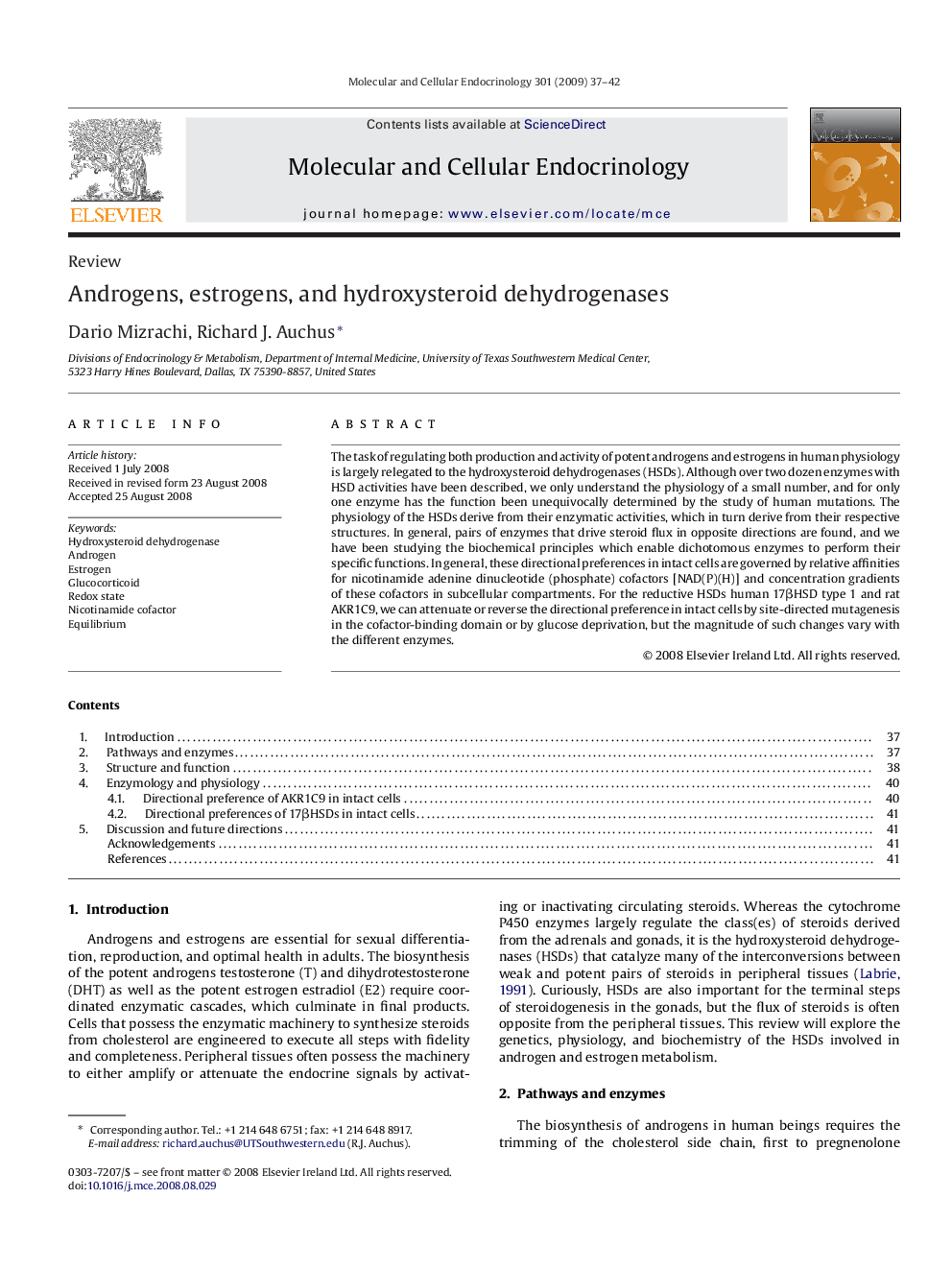| کد مقاله | کد نشریه | سال انتشار | مقاله انگلیسی | نسخه تمام متن |
|---|---|---|---|---|
| 2197353 | 1550961 | 2009 | 6 صفحه PDF | دانلود رایگان |

The task of regulating both production and activity of potent androgens and estrogens in human physiology is largely relegated to the hydroxysteroid dehydrogenases (HSDs). Although over two dozen enzymes with HSD activities have been described, we only understand the physiology of a small number, and for only one enzyme has the function been unequivocally determined by the study of human mutations. The physiology of the HSDs derive from their enzymatic activities, which in turn derive from their respective structures. In general, pairs of enzymes that drive steroid flux in opposite directions are found, and we have been studying the biochemical principles which enable dichotomous enzymes to perform their specific functions. In general, these directional preferences in intact cells are governed by relative affinities for nicotinamide adenine dinucleotide (phosphate) cofactors [NAD(P)(H)] and concentration gradients of these cofactors in subcellular compartments. For the reductive HSDs human 17βHSD type 1 and rat AKR1C9, we can attenuate or reverse the directional preference in intact cells by site-directed mutagenesis in the cofactor-binding domain or by glucose deprivation, but the magnitude of such changes vary with the different enzymes.
Journal: Molecular and Cellular Endocrinology - Volume 301, Issues 1–2, 25 March 2009, Pages 37–42